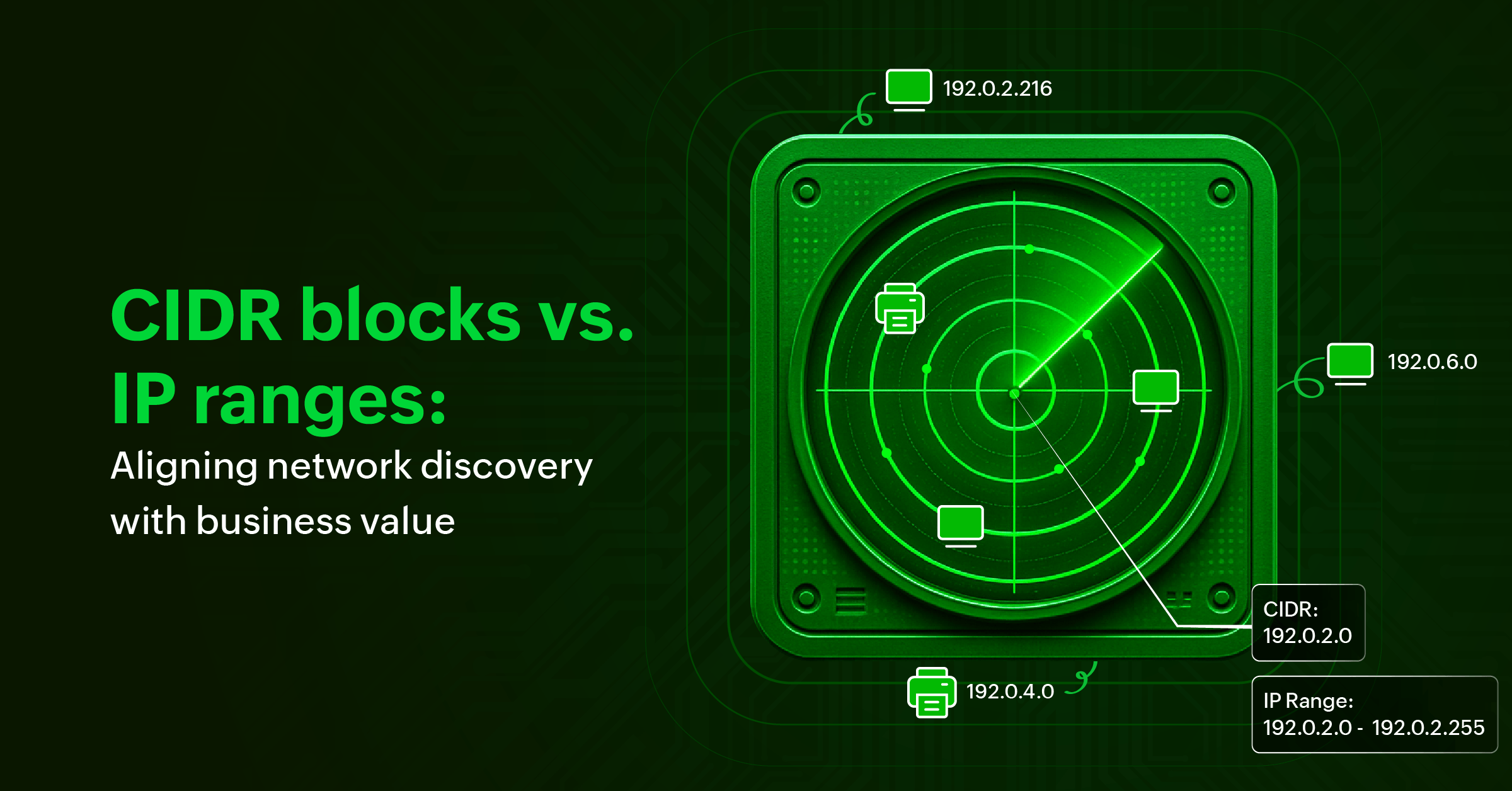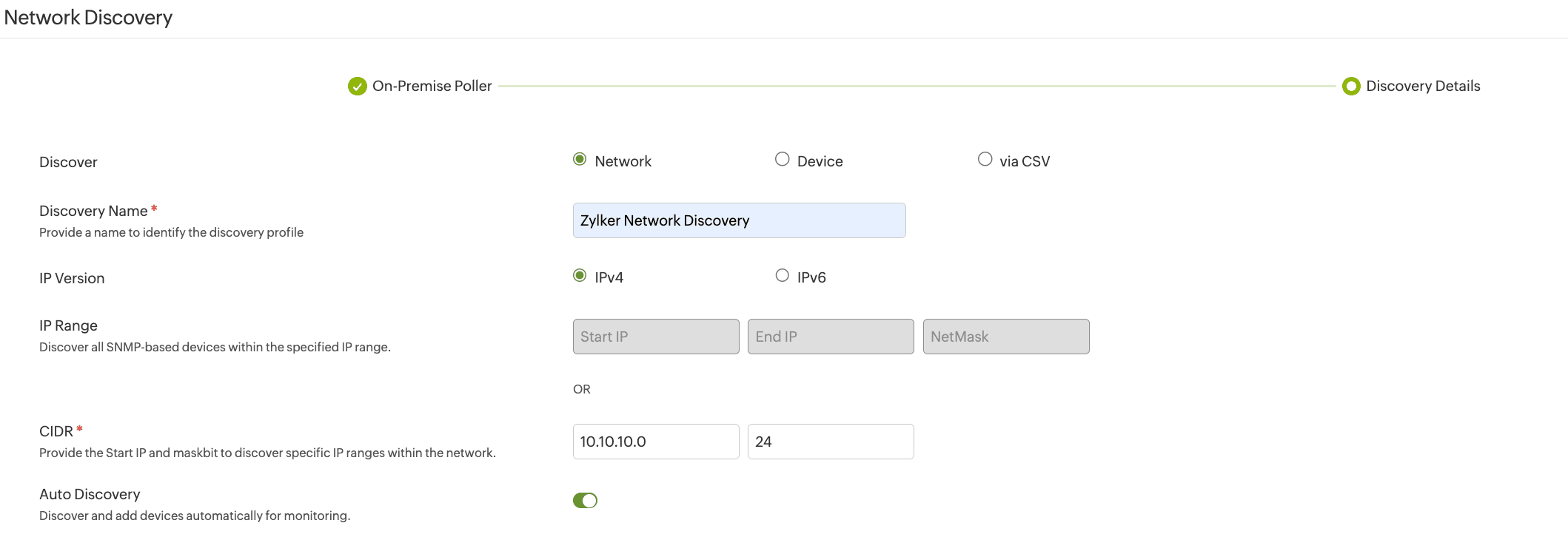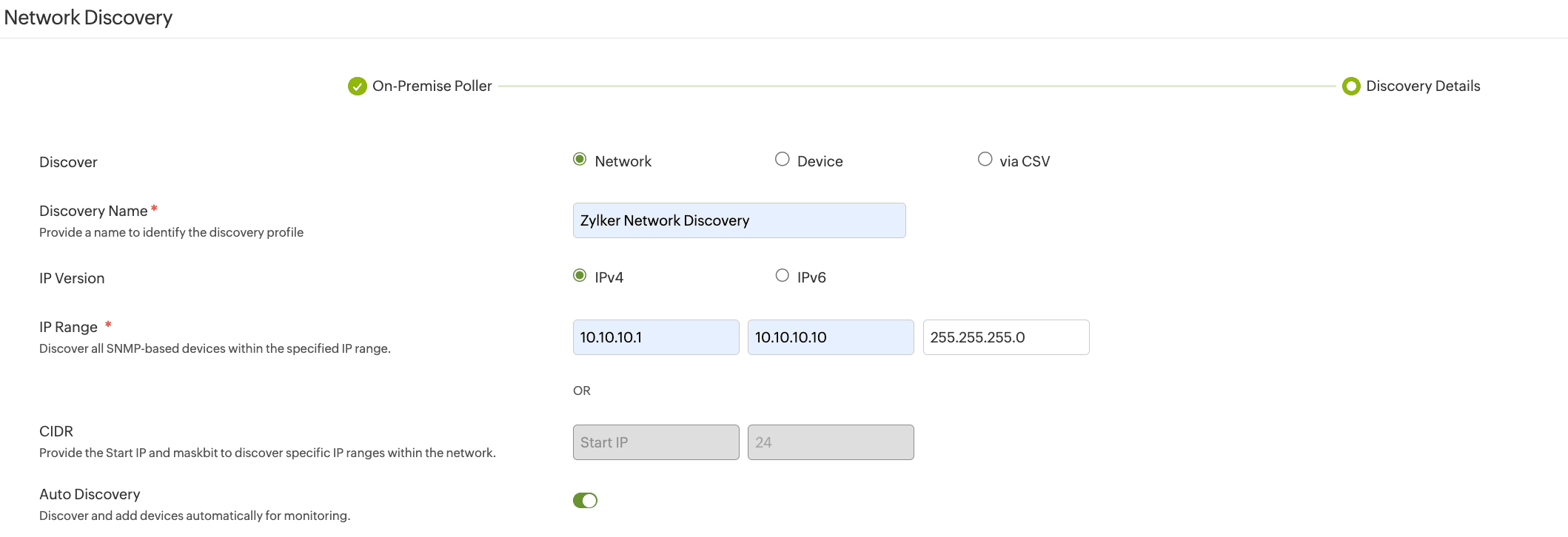CIDR blocks vs. IP ranges: Aligning network discovery with business value

At every turn, IT leaders are required to prove the value of every technology investment. Technology business management (TBM) practices encourage connecting tech spend directly to business outcomes, demanding accurate data about what’s in your network and how it supports the organization. This is why selecting a network discovery method between CIDR blocks or IP ranges isn’t just a technical preference; it’s a foundation for controlling costs, rationalizing demand, and preventing technical debt that can erode agility.
CIDR blocks explained for network discovery
Classless Inter-Domain Routing (CIDR) notation, such as 10.10.10.0/24, defines both the network and host capacity in a single block. It reduces routing table size, simplifies subnetting, and allows automated network discovery to cover entire subnets without maintaining manual address lists. In dynamic, multi-site, or hybrid environments, CIDR blocks ensure new devices are detected automatically, maintaining an accurate inventory for capacity planning and spend tracking.
CIDR is powerful for automated network discovery due to the following reasons:
-
Simplifies large-scale scans: Instead of listing every IP address, a CIDR block covers an entire subnet.
-
Optimizes routing and inventory: By grouping addresses efficiently, CIDR reduces routing table size and helps maintain an accurate network inventory.
-
Supports dynamic, hybrid environments: CIDR ensures devices added later are discovered without manual intervention in multi-site or cloud-connected networks.
-
Helps with capacity planning and monitoring spend: By detecting all devices within a subnet, admins can estimate resource utilization, bandwidth requirements, and licensing needs.
Example: For a corporate LAN with multiple departments on 10.10.10.0/24, a single CIDR entry automatically allows Site24x7 to discover all 254 potential hosts in that subnet without maintaining separate lists for each device.
IP range explained and when to use it
IP ranges, for example, 10.10.10.20–10.10.10.60, specify exactly which range of network devices to scan. They are ideal when precision counts, like targeting specific VLANs, scanning only critical systems in a secure zone, or even testing a lab environment. By controlling scope tightly, IP ranges help avoid unnecessary alerts and keep monitoring efforts proportional to real business demand.
While CIDR is broad, IP ranges offer precision control, making them ideal when you want to:
- Target critical systems: Focus on devices in a high-security VLAN or a segment handling sensitive workloads.
- Limit monitoring scope for tests: Scan a lab environment without onboarding production systems.
- Avoid unnecessary alerts: Only relevant devices are monitored by restricting discovery to a subset, reducing noise.
- Combine with filters for smart discovery: IP ranges work hand-in-hand with interface and device filters to automate onboarding selectively.
Example: In a hybrid network where only 40 devices on a subnet are critical for business operations, defining 10.10.10.20–10.10.10.60 ensures Site24x7 monitors only those devices, keeping dashboards clean and resource usage efficient.
When to use CIDR blocks vs. IP ranges and who benefits
Some network environments demand broad coverage, while others need precise targeting. That’s why Site24x7 supports monitoring via both CIDR blocks and IP ranges, giving network administrators the flexibility to scan entire subnets or focus on a narrow section of critical devices. By combining these options with discovery filters and interface-level rules, Site24x7 ensures that organizations avoid alert fatigue; optimize license usage; and maintain a clean, business-relevant inventory. Whether you’re managing a fast-scaling enterprise network or a tightly secured lab setup, Site24x7 adapts to your needs.
| Method | When to use it | Why use it? | Who benefits |
| CIDR blocks |
|
|
|
| IP ranges |
|
|
|
Use case: Automated discovery for growing enterprises
A manufacturer expanding into new regions can create a single discovery profile in Site24x7, clone it per site, and assign CIDR blocks like 10.10.10.0/24. As routers or switches are added, automated rediscovery keeps inventories current. This reduces manual work, ensures accurate capacity planning, and connects infrastructure growth directly to business initiatives—a core TBM principle.
Use case: Targeted scans for secure environments
A bank operating a PCI-compliant data center may choose IP ranges such as 10.10.10.30–10.10.10.45 to scan only critical systems. This targeted approach supports demand rationalization—monitoring only what’s necessary—while preventing alert fatigue and safeguarding compliance.
How Site24x7 simplifies discovery and maximizes reuse
With Site24x7, discovering your network is a one-time setup that keeps delivering value. Create a profile with a CIDR block or IP range, reuse it across locations or segments, and schedule rediscovery. As new devices join the network, Site24x7 updates your inventory automatically—no repetitive manual configuration. This ensures accurate monitoring data for budgeting, demand rationalization, and performance optimization, aligning with TBM practices for measurable business impact.
Choosing the best network discovery approach
To keep networks agile and budgets defensible, IT leaders must link discovery methods to business priorities. Using TBM practices for connecting tech investments to business value means preventing technical debt, rationalizing demand, and maintaining clear visibility. Site24x7’s automated network discovery—whether through CIDR blocks or IP ranges—keeps device maps current, optimizes monitoring spend, and proves the business impact of network investments.
Take the next step: Review your current network discovery profiles and see where CIDR blocks or IP ranges can reduce manual effort and align monitoring with your business objectives. Try Site24x7’s automated discovery today to prevent technical debt, rationalize demand, and clearly connect your network investments to measurable business value.